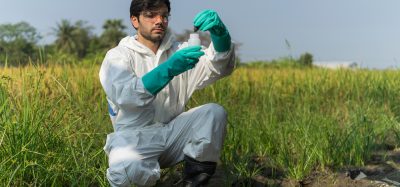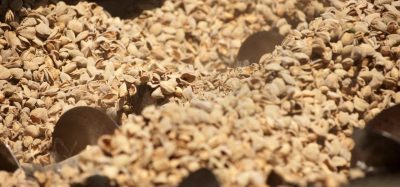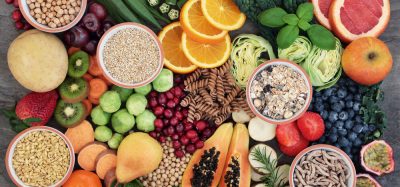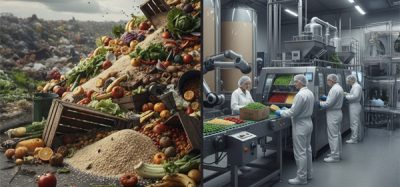Taking ownership of the production process
Posted: 27 February 2013 | David Minsk, President US Sales, Hanna Instruments | No comments yet
David Minsk, President of US Sales at Hanna Instruments, highlights the fact that the company is vertically integrated, with everything manufactured internally…
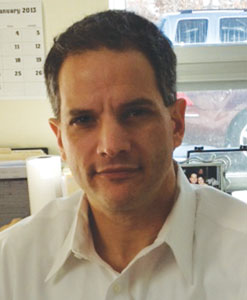

David Minsk, President of US Sales at Hanna Instruments
Founded in 1978 in Padua, Italy by Oscar Nardo, Hanna Instruments is a global manufacturer of analytical instruments used in a wide range of applications, including the food and beverage industry. Their production facilities are ISO 9001 certified. The company has over 40 offices throughout the world and produces over 3,000 products with headquarters in Rhode Island. David Minsk, President of US Sales at Hanna Instruments, highlights the fact that the company is vertically integrated, with everything manufactured internally.


David Minsk, President of US Sales at Hanna Instruments
“We pride ourselves on taking ownership of the entire production process,” says Minsk.
“Food and beverage has always been a strategic market for Hanna. Our product line started out primarily for measuring pH levels before expanding into temperature. Over the past 10 years, we’ve expanded our investment in new product development by identifying core parameters required by a wide range of food and beverage producers. Once the parameters were identified, we developed the instrumentation that would benefit both large and small food and beverage producers. For example, maintaining pH levels is an important requirement for many food and beverage applications, such as dairy, meat, and more recently, the sushi market. There are increasing requirements for sushi producers to maintain their pH within a targeted pH of 4.1 and an equilibrium pH of 4.6. The result is we developed a pH meter with an electrode that is non-toxic and ideally designed for food applications. Specifically, the electrode has a conic tip which allows it to penetrate a wide range of semi-solid foods like sushi, cheese and meat. Most standard laboratory pH electrodes are designed with a bulb or flat tip that isn’t conducive to most food applications and require samples to be diluted with de-ionised water in order for an accurate pH reading to be possible. By taking an assessment of the market and understanding of what the market actually needs, we’ve created a popular and universally accepted product that makes the customers’ lives easier. Another example would be within beverage production. A lot of beverage companies have to conduct an analysis of their titratable acids for quality control. Titratable Acidity is typically done via manual titrations and is prone to subjectivity and error. We’ve created a family of products, that are easy to use and automates the process for better reproducibility. Specific examples would include lactic acid in dairy or citric, malic and tartaric acid in juices. Hanna’s series of titrators such as the HI84432 pH and Fruit Juice Titrator and the HI84429 pH and Lactic Acid in Dairy titrator provide an, easy to use and affordable instrument that allows beverage and dairy producers to achieve accurate and reproducible results. The HI84429 was voted one of the top five new products for the dairy industry at the annual World Ag show in Tulare California. Another example would be the determination of salt/sodium. Food and beverage producers are required to monitor and control sodium levels. Hanna offers a variety of instruments and proven methods that allow them to accurately determine sodium levels within their products.”
One aspect of food and beverage analyses is the need for real-time, on-line measurements. “If you have a problem with pH, or ascorbic acid, you need to know that on a real time basis,” Minsk agrees. “Time and cost are important factors. Food quality and maintaining standards like HACCP are so important. What we see is more customers investing in the ability to do things in-house. We partner with the customer to ensure that their instruments are within calibration and provide service, retraining and installation when it’s needed. They need instant information to identify trends and make corrections on an immediate basis within their processes. In order to do that, they need reliable instrumentation to do so. In addition to the food / beverage lab and quality control, Hanna also manufactures instrumentation that is used for sanitation control. Sanitation requirements are critical to farmers who grow produce as well as food / beverage producers who produce wastewater within their process. Hanna’s product line can monitor and control the pH, ORP (Oxidation Reduction Potential) and chlorine of washwater or wastewater. Chlorine is one of the most commonly used sanitisers but it must be monitored and controlled. That is where Hanna can help. Hanna offers instrumentation that can provide a direct reading of chlorine as well as monitor the sanitation effectiveness via ORP (Oxidation Reduction).”
When it comes to the actual instruments, it is important to the company that they are user-friendly. “We want people to be comfortable with our technology,” Minsk says. “We want customers to look at our instruments and not be intimidated. If they do need support then we offer technical support over the telephone, via webcasts for anyone who wants a visual aid, and technical visits for those who want practical guidance in their own space. It’s important to us that our customers get value from our instruments.”




